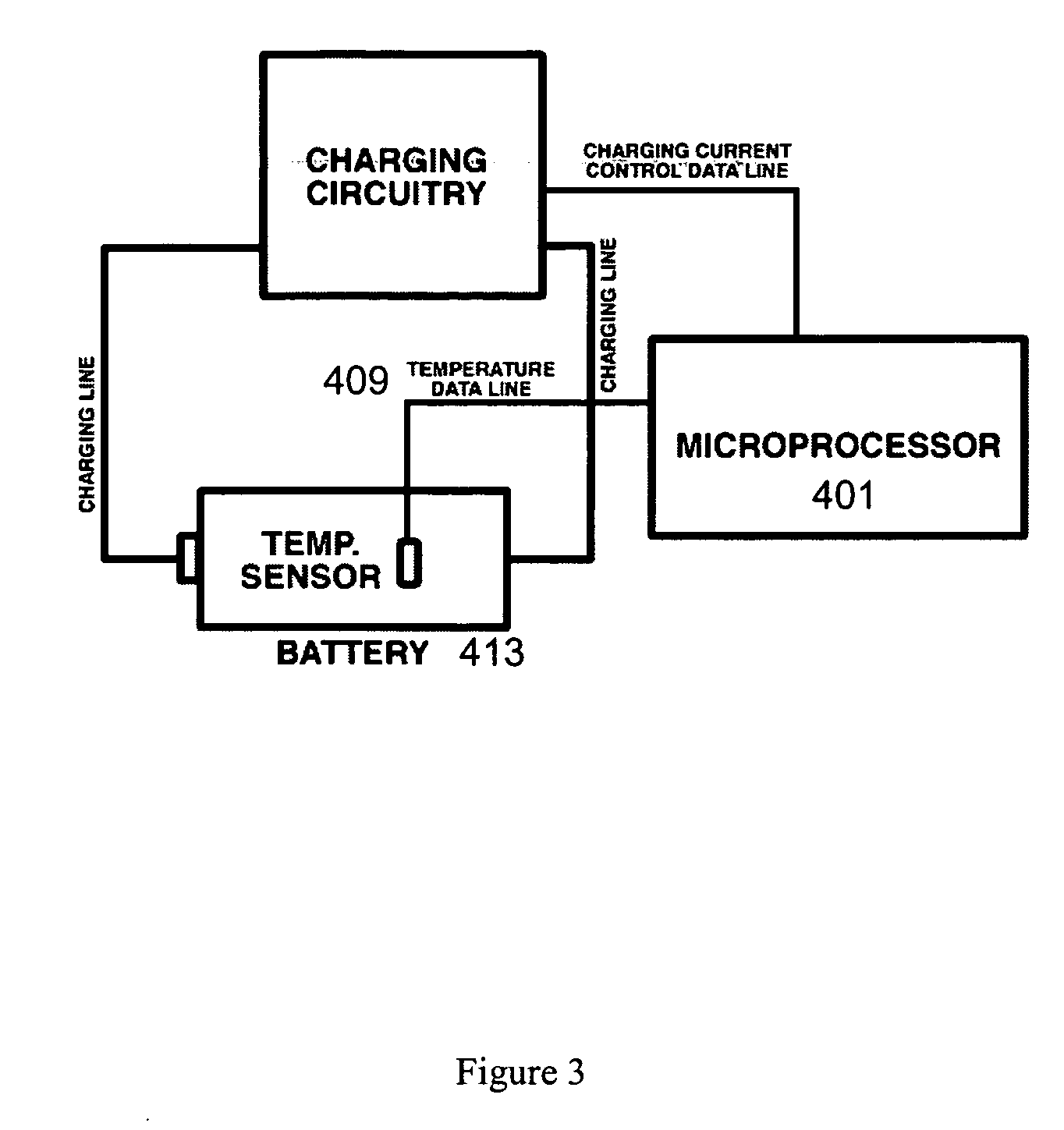Method and apparatus for providing temperature-regulated battery charging
a technology of temperature regulation and battery, applied in the field of method and, can solve the problems of increasing achieve the effects of reducing the current to the battery, high charging current, and high charging curren
- Summary
- Abstract
- Description
- Claims
- Application Information
AI Technical Summary
Benefits of technology
Problems solved by technology
Method used
Image
Examples
Embodiment Construction
[0021] According to a first exemplary embodiment of the present invention, a charging platform that includes a processor, e.g., a microcontroller, may be used to control the charging of a battery as a function of battery temperature. In one exemplary embodiment, both voltage and temperature measurements can be used to determine a particular chemical state of the battery. Voltage data can be obtained by taking measurements across the battery terminals during the charging, which may then be used to determine when, e.g., a NiMH battery is completely charged. From such data, differences in individual cells may be determined and used to control the charge intensity for a particular battery. In another exemplary embodiment, the temperature data may be obtained using thermal sensors placed on the skin (surface) or terminals of the batteries. The heat generated during a charge, e.g., due to a hydrogen absorption in the battery, can vary during the charging as a result of changes in the inte...
PUM
 Login to View More
Login to View More Abstract
Description
Claims
Application Information
 Login to View More
Login to View More - R&D
- Intellectual Property
- Life Sciences
- Materials
- Tech Scout
- Unparalleled Data Quality
- Higher Quality Content
- 60% Fewer Hallucinations
Browse by: Latest US Patents, China's latest patents, Technical Efficacy Thesaurus, Application Domain, Technology Topic, Popular Technical Reports.
© 2025 PatSnap. All rights reserved.Legal|Privacy policy|Modern Slavery Act Transparency Statement|Sitemap|About US| Contact US: help@patsnap.com



